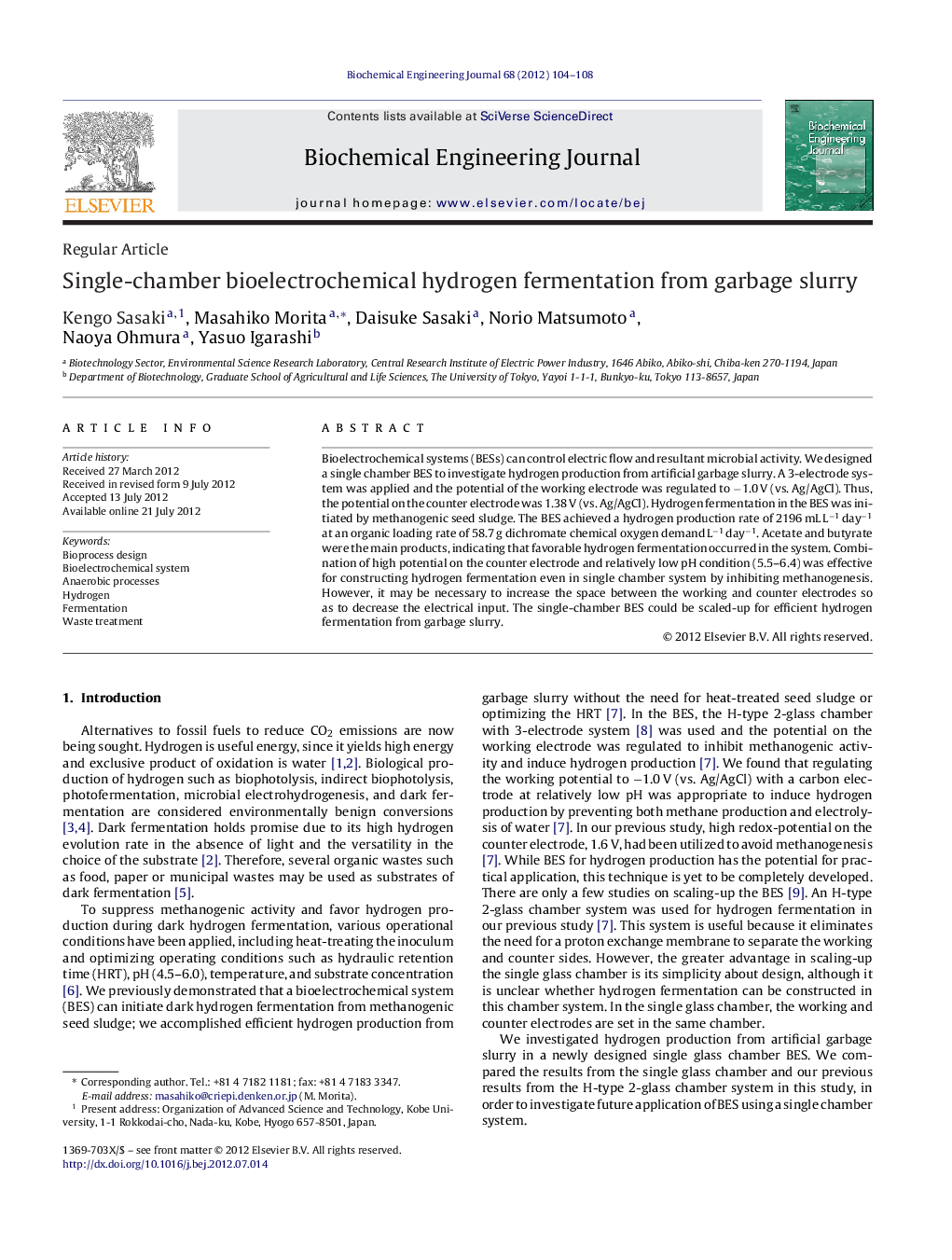| Article ID | Journal | Published Year | Pages | File Type |
|---|---|---|---|---|
| 3478 | Biochemical Engineering Journal | 2012 | 5 Pages |
Bioelectrochemical systems (BESs) can control electric flow and resultant microbial activity. We designed a single chamber BES to investigate hydrogen production from artificial garbage slurry. A 3-electrode system was applied and the potential of the working electrode was regulated to −1.0 V (vs. Ag/AgCl). Thus, the potential on the counter electrode was 1.38 V (vs. Ag/AgCl). Hydrogen fermentation in the BES was initiated by methanogenic seed sludge. The BES achieved a hydrogen production rate of 2196 mL L−1 day−1 at an organic loading rate of 58.7 g dichromate chemical oxygen demand L−1 day−1. Acetate and butyrate were the main products, indicating that favorable hydrogen fermentation occurred in the system. Combination of high potential on the counter electrode and relatively low pH condition (5.5–6.4) was effective for constructing hydrogen fermentation even in single chamber system by inhibiting methanogenesis. However, it may be necessary to increase the space between the working and counter electrodes so as to decrease the electrical input. The single-chamber BES could be scaled-up for efficient hydrogen fermentation from garbage slurry.
► Single-chamber bioelectrochemical system was operated because design is simple. ► Hydrogen fermentation from artificial garbage slurry was easily constructed. ► Hydrogen production rate of 2196 mL L−1 day−1 was attained. ► Acetate and butyrate were the main products in volatile fatty acids. ► High potential on the anodic electrode and low pH was important.
